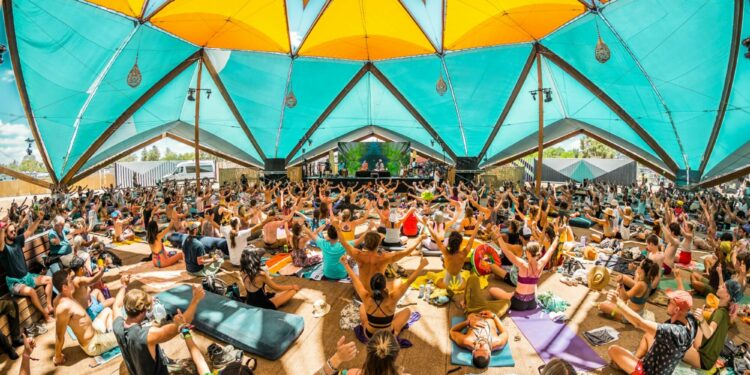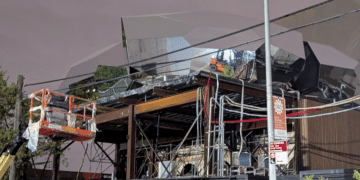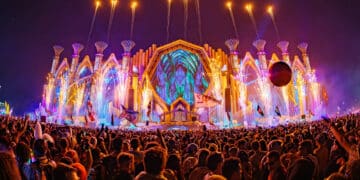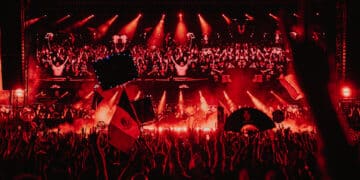Eight nights in Ibiza revealed how phones, VIPs, and intent are redefining the culture of dance music for a new generation.
The future of club culture isn’t being written in headlines. It’s happening quietly on the dancefloor. Whether in Miami, Berlin, or São Paulo, a new generation of ravers is shaping what house music culture means today, negotiating the line between presence and performance, tradition and evolution. And with that shift comes debate.
Phones, VIP sections, commercialization, and overall nostalgia for how things used to be are all common talking points in recent conversations. Some say the scene is dying, diluted by influencers and bottle service. Others argue that the spirit never left; it just changes hands with each era.
While there is no objective answer to where the dance music scene is headed, there are clues hidden in the spaces where it comes alive. And there’s one place in the world where you can get a credible look: Ibiza. I spent a week immersed in the club circuit on the island known as the world’s mecca of dance music, not just as a partygoer or press, but as an observant participant looking to see how those debates actually play out in real time, on real dancefloors.
Late this June, I took a last-minute trip to Ibiza. Inspired and excited, I queued up a few episodes of the Loud & Unfiltered podcast’s “Inside Ibiza” series, a recent discovery that I’ve tapped into to learn more about the history and figures that have helped shape the beloved island and the culture as a whole. It felt like the right headspace to get into before landing on an island that means so many different things to so many people.
As I listened to longtime figures like Grego O’Halloran of DC10 and Andy McKay of Manumission, surrounded by party-goers young and old, I ruminated on all of the debates over the “state of the island” and the conversations that buzz around this time of the year when new generations begin to descend upon it. The debates aren’t new, and the real story often lies somewhere between the nostalgia and the now. For the tenth time in Ibiza, I decided I owed it a more reflective and intentional visit.
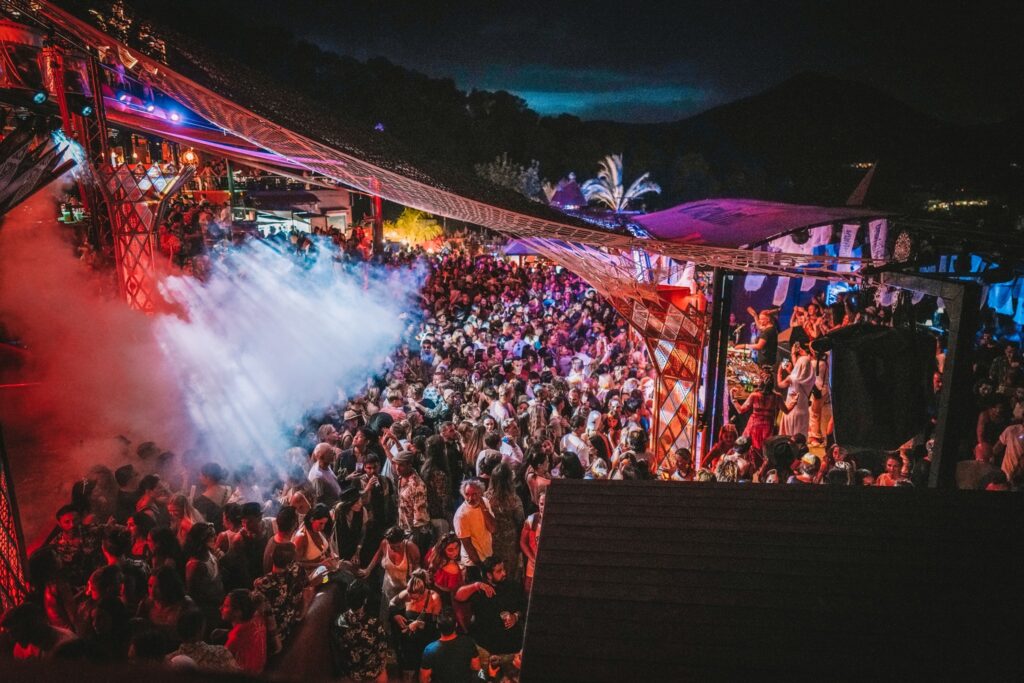
Phones, VIPs, and the Intent We Bring
If you’ve been anywhere near nightlife discourse in the past few years, you know the talking points: “No one dances anymore. Everyone’s filming. The phones killed the vibe.” But from what I’ve observed, it’s not that simple.
Phones are most noticeable at large-scale, high-production events, especially those meant to impress visually. At those, it can feel like you’re surrounded by outstretched arms capturing every drop. But step into the right room, and the energy changes entirely.
At Hï Ibiza, the Theatre and Club Room were expectedly phone heavy. But the Wild Corner, the famous bathroom club? That’s where I found some of the most present, in-the-moment dancing of my trip.
People stumbled in casually and ended up staying for hours — no phones, just sweat and movement. I’ve seen celebrities in full glam lose themselves in that room, just like everyone else. It’s a space that revolves around sound, not status.
That’s when it hit me: It’s not about banning phones. It’s about making sure the music is so good that you forget about them.
Then there’s the ever-persistent topic of VIP culture: its rise, impact, and visibility. At Pacha, one of the most iconic clubs on the island, the split between VIP and GA is clear, especially so in recent years. The platforms are now elevated and completely sectioned off, and luxury is on full display.
However, there are various kinds of parties happening every day of the week, from the classic ode to disco that is Flower Power to Solomun‘s world-renowned Sunday party, which attracts a contrasting rotation of crowds. Depending on the day and party-goers’ own preferences, connection on the dancefloor is still there to be found — whether in GA or VIP.
I still saw strangers dancing, hugging, and sharing water, and it’s happening on both sides of the rope. For someone who must be at a table, standing in GA might be a nightmare. For others, a little more sweat, movement, and crowding won’t take away from the ambiance, rich history, and top-tier performances that it offers.
That’s the nuance people miss. When VIP culture dominates the space and energy, it certainly has the ability to kill the vibe — but it doesn’t necessarily need to. If that’s what the crowd cares about, then that is what the party will be about. At Eden, in contrast, the layout feels democratic with easy flow and more shared access. It’s a reminder that good design can create shared experiences without compromising anyone’s night.
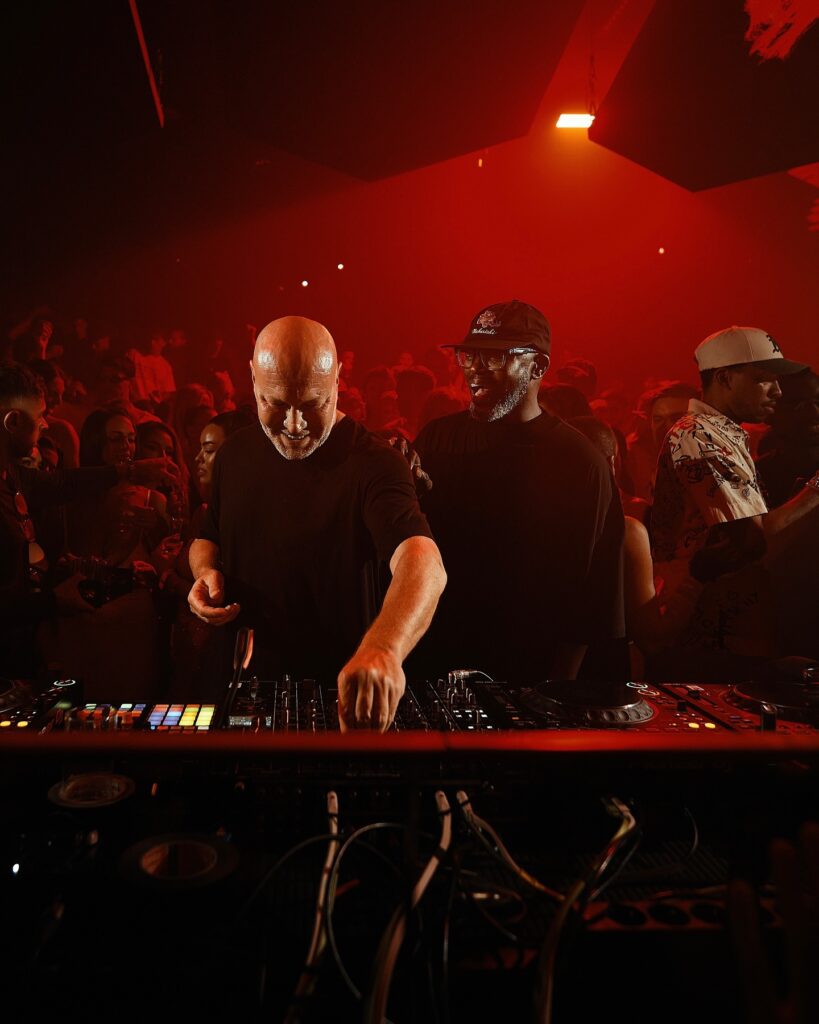
Across the Island, Across the Culture
My decision to visit Ibiza this summer wasn’t planned, so I arrived with few media obligations and too short notice to chase any guest lists. I’ve been on the island many times, and a spontaneous experience was more than okay with me. In fact, it aligned that I’d get to see the crowd not as carefree as a party-goer, and not locked-in and sectioned off as media, but a perfect in between. Over eight nights, I made it a point to hit nearly every major venue on the island: Amnesia, Hï, DC10, Pacha, UNVRS, Chinois, Eden, Pikes, and Cova Santa, not necessarily for the artist playing, but for the crowd itself.
At Amnesia, I expected the floor to be thinner because of [UNVRS]’ pull. But the scale of the room remained as massive as I remembered.
At Pacha, Marco Carola’s party pulled a massive crowd. Music On is a legendary event brand — one that attracts both superfans and first-timers, so there were phones. But there was also a lot of dancing. It happened to fall on the same night as Paradise at UNVRS.
I came to dance all night, and I paid no mind to my phone battery. When I went to UNVRS, where the spectacle almost invites the camera, I’d charged my phone fully before arriving — not because I didn’t want to be present, but because I anticipated a different kind of show. My priorities shifted. And that’s the point: Intent shapes experience.
Pikes, with its 27+ door policy and communal layout, is a reminder that intimacy and intention still have their place on the island. DC10, depending on the room and the party, can also be proof that energy flows strongest when the room trusts the DJ. Chinois surprised me with its tasteful crowd and visual design. Cova Santa struck a rare balance between sunset dining and dancefloor surrender. Eden was unpretentious, well-run, and refreshingly easy.
And then there’s UNVRS. It’s the island’s newest mega-club and a symbol of scale. Built from the bones of Privilege, its production is cinematic, more immersive theatre than club at times. Phones were out and spectacle was high.
But there were also moments of real connection: people locking into a groove, sharing glances, staying longer than expected. UNVRS isn’t inherently good or bad. It just represents a new model, a different offer. And the crowd’s intent defines the night more than the venue itself ever could.
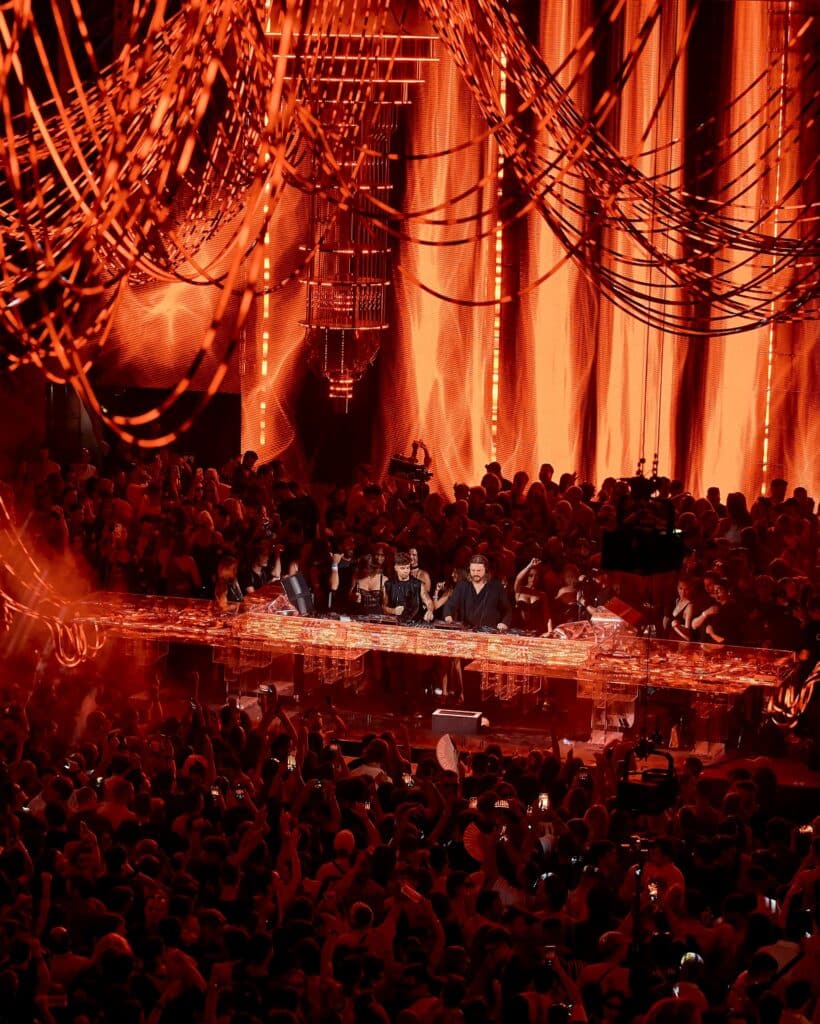
What This Means Beyond Ibiza
This article isn’t just about Ibiza. The White Isle is simply the most condensed, visible reflection of what’s happening around the world. The questions being asked here — about access, intention, preservation, innovation — are being asked in New York, Miami, London, Tulum, São Paulo, and everywhere house music lives.
The answer isn’t necessarily found in a no-phone policy or GA ticket stub. It’s in the way people show up and why.
I am not an industry veteran, nor have I watched Ibiza evolve from one decade to the next, but I’ve been paying attention. What I saw this summer is that the magic isn’t gone, but shifting. It’s being held by new hands. The responsibility is ours now, not just to preserve what once was, but to shape what comes next.
And if we show up for the music, for each other, then this culture isn’t dying. It’s just beginning another chapter.



